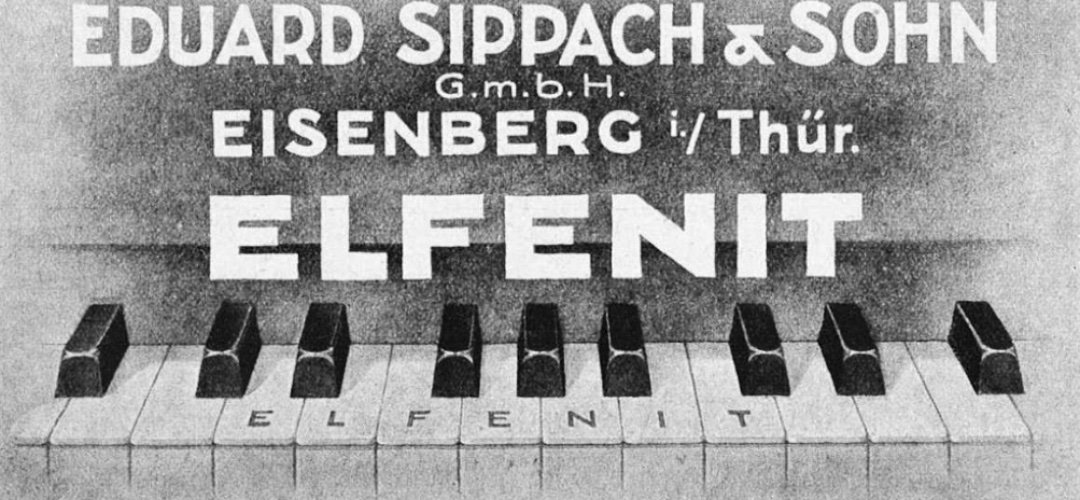Bei alten Pianos ist der Tastaturbelag der weißen Tasten bis ca. 1910 zumeist aus Elfenbein. Die schwarzen Tastenaufsätze oft aus Ebenholz. Nur wenigen ist bekannt, dass in der Blütezeit des Klavierbaus um 1900 jährlich schätzungsweise weit über 50.000 Elefanten auch wegen des Elfenbeins für Klavier- und Flügeltastaturen erlegt wurden. Details dazu, also auch zu seit 19.01.2022 verschärften EU Regeln für Pianos mit Elfenbeintastenbelägen, finden Sie in unserem Beitrag ‚'Ivory keys on pianos'.‚.
Occasionally, other materials were also used for white piano key coverings, e.g. bone - but this is not always easy to identify, even for connoisseurs. Keyboards, especially those of average manufacturers, used new types of synthetic materials such as Elfenit, Argolit or Clavoid (all brand names of manufacturers at the time), which were supposed to be more durable than ivory. Quite the opposite - after a few years these usually dried out and cracks, detachments and severe discolouration formed (see example photo). Such keyboards cannot be cleaned properly and usually require many hours of work to obtain new coverings. It was not until the 1920s that plastics were used for piano keys, which lasted for decades with good care.


